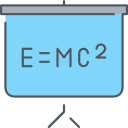
Skripsi
KLASIFIKASI ABNORMALITAS STRUKTUR JANTUNG ANAK DAN VISUALISASI MENGGUNAKAN CONVOLUTIONAL NEURAL NETWORK DAN GUIDED BACKPROPAGATION
Penilaian
0,0
dari 5The application of artificial intelligence in these days is so much, it is beginning to enter a wide range of fields in the world, one of which is in the field of biomedicine. CNN uses several layers to help the classification process, especially the one on this study of the child's heart. The child's heart image will be processed into a previously created model that aims to recognize each class on each image, which will be subsequently grouped into four classes, namely atrial septal defect (ASD), atrioventricular septaldefect (AVSD), ventricultural septal Defect (VSD), and NORMAL. The models used are ResNet50, MobileNetV2, XceptionNet, and DenseNet121, where Xception achieved the best results at the validation and unseen test stages, with accuracy of 99% and 76%. After the classification process is completed, the next stage is the visualization process using Guided Backpropagation (Guided BP). Guided BP aims to clarify the parts on the child's heart image in order to mark any part that has the largest percentage in the process of classification. At this stage of visualization, the DenseNet121 model has a good result when compared to the other three models.
Availability
| Inventory Code | Barcode | Call Number | Location | Status |
|---|---|---|---|---|
| 2407000860 | T139284 | T1392842024 | Central Library (Referens) | Available but not for loan - Not for Loan |
Detail Information
- Series Title
-
-
- Call Number
-
T1392842024
- Publisher
- Inderalaya : Prodi Sistem Komputer, Fakultas Ilmu Komputer Uniersitas Sriwijaya., 2024
- Collation
-
xv, 83 hlm.; Ilus.; 29 cm
- Language
-
Indonesia
- ISBN/ISSN
-
-
- Classification
-
006.307
- Content Type
-
Text
- Media Type
-
unmediated
- Carrier Type
-
-
- Edition
-
-
- Subject(s)
- Specific Detail Info
-
-
- Statement of Responsibility
-
SEPTA
Other version/related
No other version available
File Attachment
Comments
You must be logged in to post a comment
 Computer Science, Information & General Works
Computer Science, Information & General Works  Philosophy & Psychology
Philosophy & Psychology  Religion
Religion  Social Sciences
Social Sciences  Language
Language  Pure Science
Pure Science  Applied Sciences
Applied Sciences  Art & Recreation
Art & Recreation  Literature
Literature  History & Geography
History & Geography